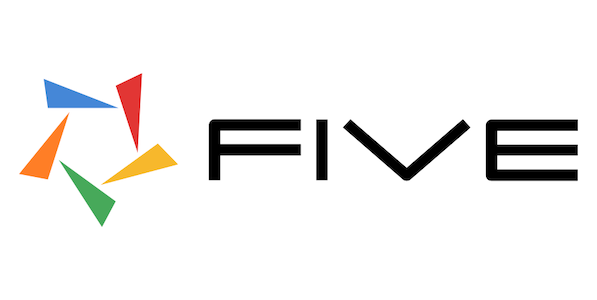Create an Angular Web App From Scratch
How to Create an Angular Web App
Building an Angular application from scratch is an essential skill for modern web developers, as Angular remains one of the most popular front-end frameworks. With its powerful tools, robust features, and ability to manage complex web applications, Angular is widely used for creating dynamic single-page applications (SPAs) and rich user interfaces.
According to multiple developer surveys, Angular consistently ranks as a top choice for front-end development, favored for its comprehensive framework, strong community support, and built-in tools for routing, form validation, and HTTP services.
But here’s the truth: creating an Angular application doesn’t have to be overwhelming. In this guide, I’ll walk you through the process of building an Angular app from scratch using modern tools and best practices.
Angular Web Apps: Required Tools and Frameworks
To build a web application using Angular, you’ll need a set of essential tools and frameworks. Let’s break these down into a few key categories:
First and foremost, you’ll need Node.js and npm (Node Package Manager). Node.js is a JavaScript runtime that allows you to run JavaScript on your computer outside of a browser. npm comes bundled with Node.js and is crucial for managing dependencies and packages in your Angular project.
Next, you’ll want to install the Angular CLI (Command Line Interface). This tool helps the process of creating, developing, and managing Angular projects. It provides commands for generating components, services, and other Angular artifacts, as well as building and serving your application.
A code editor or Integrated Development Environment (IDE) is also essential. Popular choices among Angular developers include Visual Studio Code, WebStorm, and Sublime Text. These editors offer features like syntax highlighting, code completion, and debugging tools that can significantly enhance your development experience.
For version control, Git is highly recommended. While not strictly required for Angular development, Git allows you to track changes in your code, collaborate with others, and manage different versions of your project effectively.
Lastly, you may want to consider additional tools and frameworks depending on your project’s specific needs. These could include testing frameworks like Jasmine and Karma (which come pre-configured with Angular projects), state management libraries like NgRx, or UI component libraries such as Angular Material or ng-bootstrap.
Five: The Fastest Way to Build a Web App for Angular Developers
Five offers Angular developers an incredibly efficient way to build web applications, providing an alternative for those looking to speed up development without sacrificing control or flexibility.
As a rapid application development environment, Five eliminates much of the repetitive work involved in web app creation, particularly when it comes to integrating with back-end data sources and managing complex functionalities.
One of the most compelling features of Five is its ability to auto-generate fully responsive interfaces connected to almost any data source.
Whether you’re working with databases or APIs, Five simplifies back-end integration, allowing developers to stay focused on the front-end user experience.
Five also includes a built-in MySQL database modeler, enabling you to design and manage your database schema directly within the platform.
For developers needing to connect external services, Five’s connection wizard makes it easy to integrate REST APIs or external databases, saving time and effort. This is particularly useful for full-stack projects requiring robust data management and fast, reliable integration capabilities.
On the front end, Five provides form, chart, and report wizards that allow you to quickly create intuitive components for data collection and visualization.
One of the most valuable features of Five is its single-click deployment capability, allowing you to go from development to launch in a few clicks. Everything is done within your browser, with no need for additional external tools or installations.
Web App Tutorial: Build and Deploy a Angular Web App

In this web app tutorial, you will learn step-by-step how to create a fully functional web app using Five. Whether you are starting from scratch or integrating with an existing project, this guide will walk you through everything you need to build a web app in no time.
Here’s what you’ll achieve by the end of this tutorial:
Database Creation:
We’ll start by creating a database from scratch using Five’s built-in MySQL modeler, so you can manage and structure your data with ease.
Auto-Generated Admin Panel:
With your database ready, you’ll instantly generate an admin panel with features like forms for data collection, interactive charts for visualization, and a PDF report generator.
User Management & Authentication:
Learn how to add user management and authentication features to control access to your admin panel.
Third-Party Integration:
Finally, you will integrate your admin panel with external services like Slack, giving your application the ability to send real-time notifications and alerts.
If you prefer written, step-by-step instructions for this web app tutorial, visit our code-along article here.
What Developers Say About Five
Here is what developers say about Five:
“Five is a great product for building admin panels or CRUD applications. It is easy to use, scalable and has great customer support. I highly recommend Five to anyone who needs to build a web application without much effort.” – Shweta Kale, Software Developer
“Five took away a lot of headaches of frontend development by providing a highly customizable UI and navbar alongside a MySQL database.” – Nebiyu Elias, Software Engineer
“Five is an excellent approach to that disconnect between relational database development and the web.” – Crag Jones
“With Five, we were able to very quickly develop a prototype of the solution we had in mind. We liked the fact that inside Five, we can work in no code, low code, or even full code, which gives us full flexibility to design software applications.” – Kurt Bornhutter, Group Manager, Revenue & Optimisation, Canstar
“Five is a rapid, robust way to take spreadsheet-based business processes, and replace them with better validated forms for data collection, and approval workflows. Five makes it easy to write custom functions, and perform traditional integrations, using JavaScript.” – Philip Antrobus, Data & AI Capability Lead, NCS Australia
Create an Angular Web App Tutorial
This comprehensive Angular development crash course video provides an in-depth introduction to building a functional web application. The course begins by covering the essential setup and prerequisites, including basic knowledge of JavaScript, HTML, and CSS, as well as the necessary tools such as Node.js, Angular CLI, and a code editor like Visual Studio Code. It then delves into the Angular project structure, explaining key files and folders that form the foundation of an Angular application.
The video explores the core concepts of Angular development, starting with components – the building blocks of Angular applications.
It demonstrates how to create and use components, including the AppComponent and HomeComponent. Services, which are crucial for sharing data and functionality across components, are also covered, with a focus on their role in API communication. The course then explains Angular’s routing system, showing how to set up routes and use the router-outlet for navigation within the application.
Data binding, a fundamental concept in Angular, is thoroughly explored, covering various types such as interpolation, property binding, and two-way binding. The video also demonstrates the use of Angular’s built-in directives like ngFor and ngIf, which are essential for dynamic content rendering. Both template-driven and reactive forms are discussed, with an emphasis on form validation techniques.
The course progresses to more advanced topics, including the use of the HttpClient module for making API calls to the backend, and the concept of Angular modules for organizing and encapsulating application functionality. It also covers the creation of custom pipes for data transformation in templates and demonstrates how to style components using SCSS.
Practical aspects of development are addressed, such as integrating third-party libraries like PrimeNG for UI components and setting up a simple Node.js backend to serve product data.
The video guides viewers through implementing CRUD (Create, Read, Update, Delete) operations for products, providing a real-world example of full-stack development. Finally, it touches on the basic concepts of building and deploying an Angular application.
Conclusion: Build an Angular Web App
This tutorial demonstrates that building a web app with Angular can be relatively straightforward. Angular’s component-based architecture and powerful tools like the Angular CLI and HttpClient make it easy to create scalable single-page applications with rich front-end functionality. The framework is ideal for both small and large-scale applications due to its modular structure and ease of managing state and data flow.
For developers looking to further improve the development process and integrate with a robust back-end, Five offers an excellent solution. It enables rapid building and deployment of applications, with features like database management, user authentication, and customizable UI.


